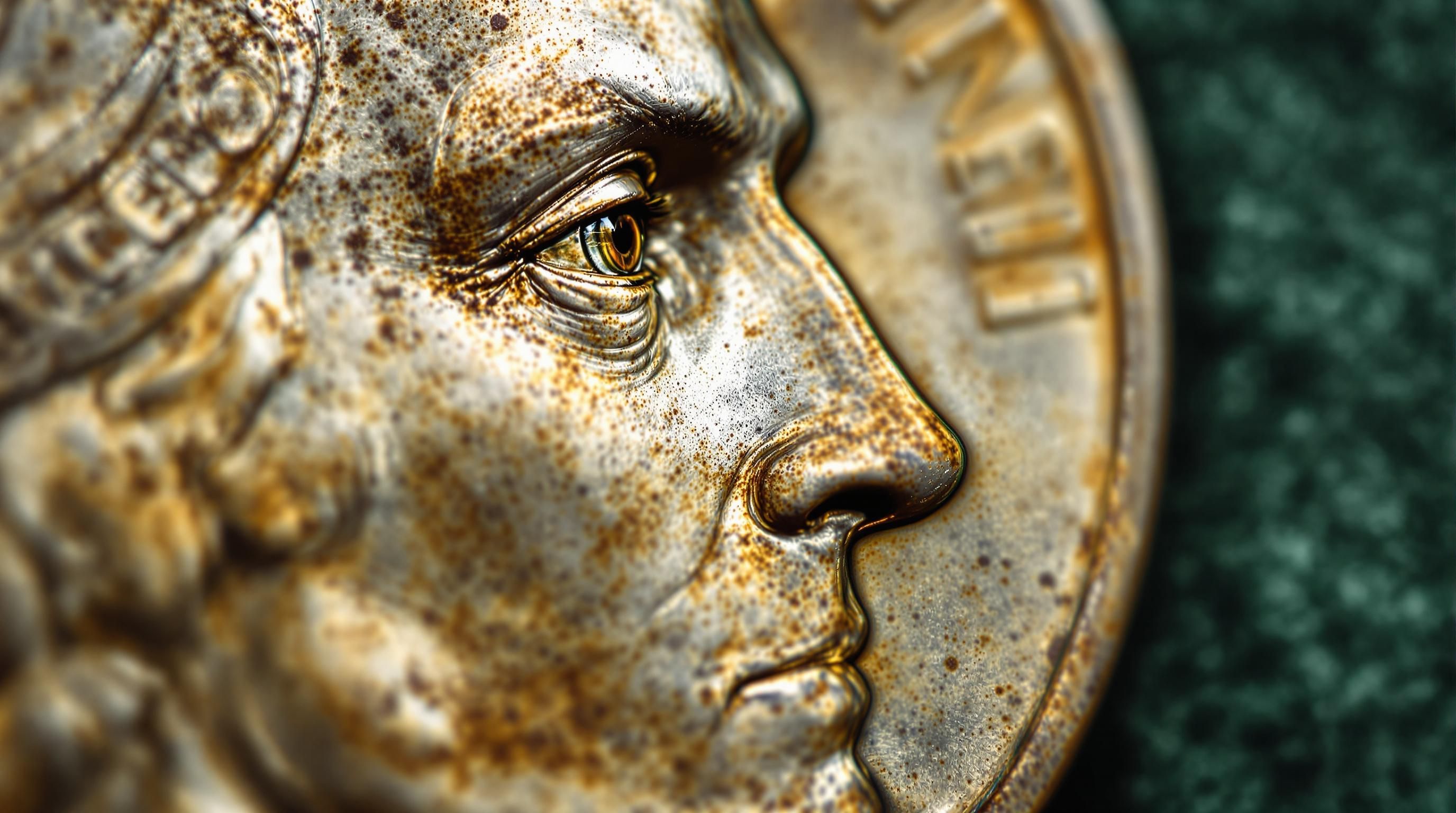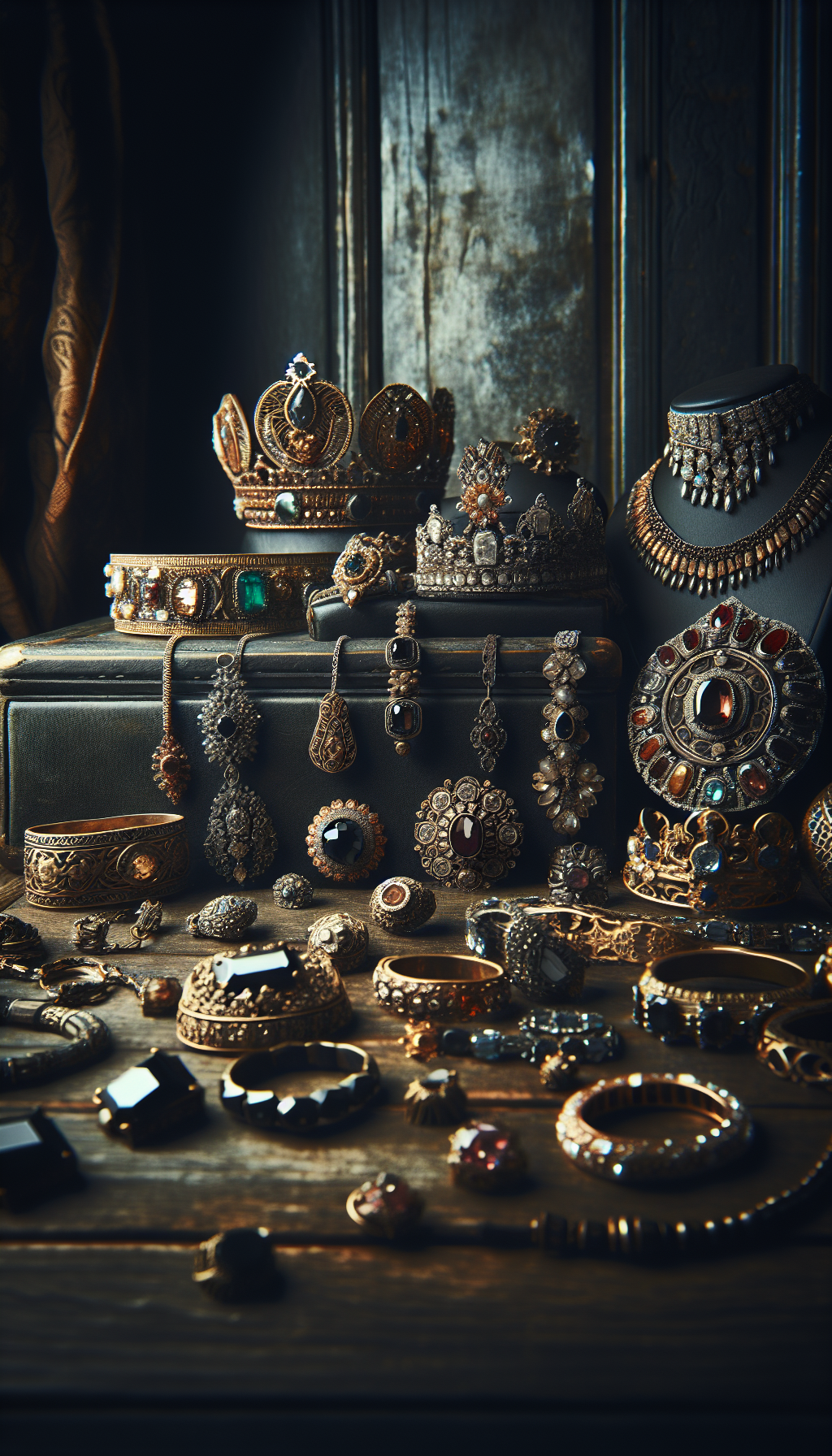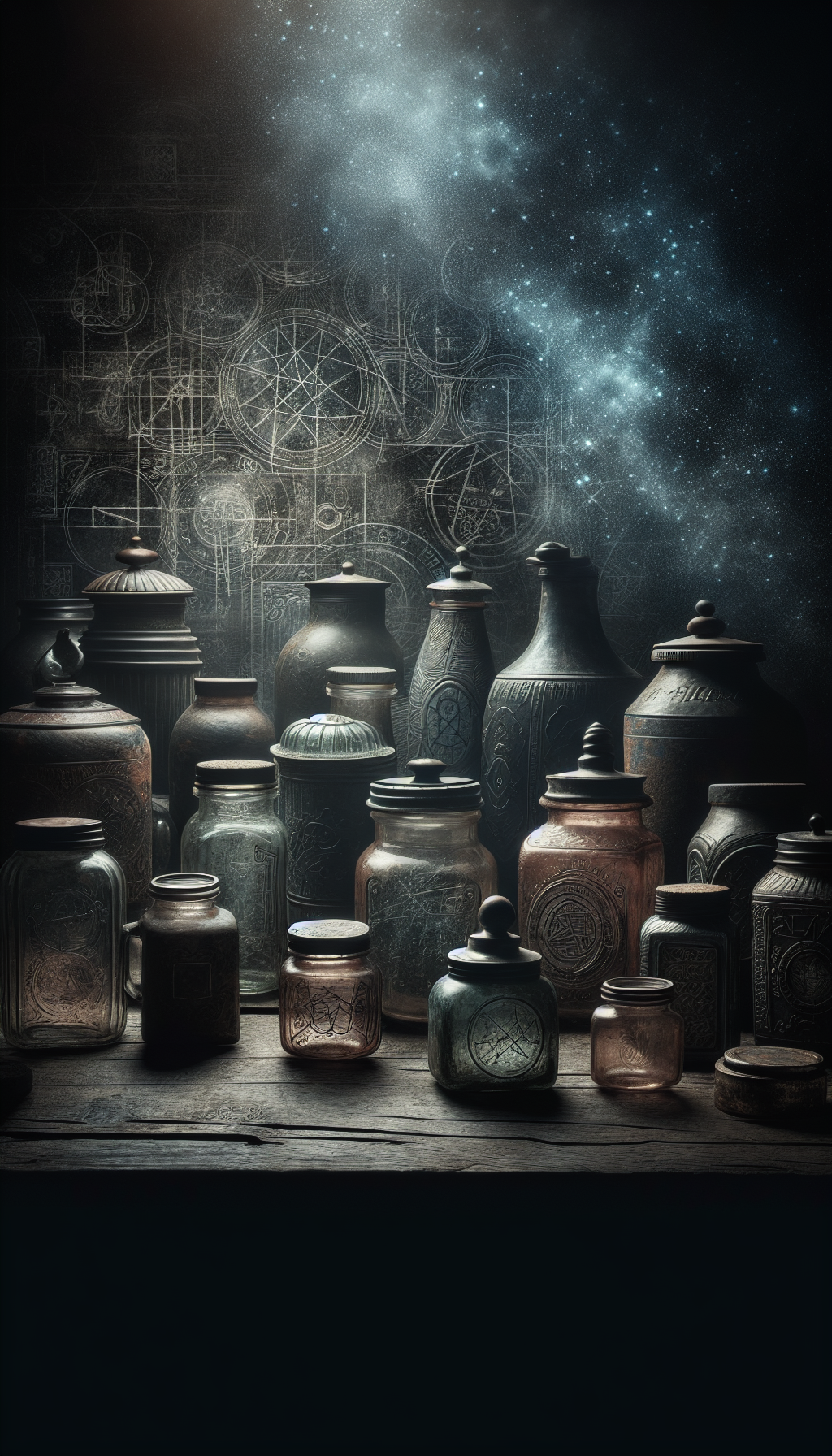Introduction to the 1942 Jefferson Nickel
1942 Nickel Quick Facts
Year of transition: Only year with both regular and silver war nickels
Silver content: 35% in war nickels (October 1942-1945)
Mintage: Over 140 million across all varieties
In this comprehensive guide, we’ll explore everything you need to know about the 1942 Jefferson nickel, including its history, how to identify different varieties, current market values based on condition and mint mark, notable errors, and tips for collectors. Whether you’ve found a 1942 nickel in your pocket change or are considering adding one to your collection, this article will help you determine its true worth.
Historical Context: The 1942 Nickel and World War II
Evolution of the 1942 Jefferson Nickel
- January-September 1942
Standard Composition Nickels
The year began with regular production of Jefferson nickels using the standard 75% copper and 25% nickel alloy at all three mints: Philadelphia (no mint mark), Denver (D), and San Francisco (S). - October 1942
Introduction of War Nickels
The U.S. Mint started producing "war nickels" with a new composition of 56% copper, 35% silver, and 9% manganese to conserve nickel for war supplies and ammunition. These were distinguished by a large mint mark (P, D, or S) above Monticello on the reverse. - October-December, 1942
Dual Production Period
For a brief period in 1942, both standard and silver war nickels were in production, making 1942 the only year with this dual composition in the Jefferson nickel series. - 1943-1945
War Nickels Continue
Silver war nickels continued to be the only five-cent pieces produced until the end of 1945, when the mint returned to the standard composition.
This wartime transition created several distinct varieties of 1942 nickels, each with different values in today’s collector market. The change to silver content was a patriotic sacrifice, as nickel was essential for armor plating. According to the National World War II Museum, the reallocation of metals like nickel from civilian to military use was crucial to the Allied war effort.
Identifying 1942 Jefferson Nickel Varieties
Standard Composition vs. War Nickel
The easiest way to identify whether you have a standard nickel or a silver war nickel is to look at the reverse (back) of the coin:
War Nickel Identification Checklist
Check these features to identify a 1942 silver war nickel:
- Large mint mark (P, D, or S) appears ABOVE Monticello on the reverse
- The mint mark is significantly larger than regular mint marks
- First time the Philadelphia mint used a 'P' mint mark
- Coin appears slightly darker or has a different tone than regular nickels
1942 Nickel Varieties by Mint
1942 Jefferson Nickel Varieties
Overview of all 1942 nickel types and their characteristics
</tbody>
</table>
According to the NGC Coin Explorer, the large mint mark above Monticello is the most distinctive feature of war nickels and makes them easy to identify, even for novice collectors.
1942 Nickel Values by Type and Condition
1942 Philadelphia Nickel (No Mint Mark)
The standard 1942 Philadelphia nickel with no mint mark is the most common variety, with a mintage of 49,789,000.
1942 No Mint Mark Nickel Values
Current market values for 1942 Philadelphia nickels (regular composition)
| Category | Price | Notes |
|---|---|---|
| 1942 No Mint Mark (Philadelphia) | Regular Composition | No visible mint mark on reverse |
| 1942-D (Denver) | Regular Composition | Small "D" mint mark to right of Monticello |
| 1942-S (San Francisco) | Regular Composition | Small "S" mint mark to right of Monticello |
| 1942-P (Philadelphia) | Silver War Nickel | Large "P" mint mark ABOVE Monticello |
| 1942-D (Denver) | Silver War Nickel | Large "D" mint mark ABOVE Monticello |
| 1942-S (San Francisco) | Silver War Nickel | Large "S" mint mark ABOVE Monticello |
| 1942 Proof (Philadelphia) | Regular Composition | Mirror-like finish, no mint mark |
</tbody>
</table>
According to USA Coin Book, the 1942 Philadelphia nickel in average circulated condition is worth approximately $0.30, while uncirculated examples can reach nearly $20 in top grades.
1942-P Silver War Nickel
The 1942-P silver war nickel (with large P mint mark above Monticello) has a mintage of 57,873,000 and contains 35% silver.
1942-P Silver War Nickel Values
Current market values for 1942-P silver war nickels
| Category | Price | Notes |
|---|---|---|
| Good to Very Good | $0.25 - $0.50 | Heavy wear, some details visible |
| Fine to Very Fine | $0.75 - $1.50 | Moderate wear, most details clear |
| Extremely Fine | $2.00 - $3.50 | Light wear, sharp details |
| About Uncirculated | $4.00 - $6.00 | Slight wear on high points |
| MS-63 (Uncirculated) | $10 - $14 | No wear, some bag marks or spots |
| MS-65 (Gem) | $25 - $35 | No wear, minimal imperfections |
| MS-67 (Superb Gem) | $125 - $175+ | Exceptional quality, nearly perfect |
| Full Steps (FS) | Add 50-200% premium | Complete stair steps visible on Monticello |
</tbody>
</table>
The Coinflation website notes that the silver melt value alone for a 1942-P war nickel is approximately $1.88 as of April 2025, making even worn examples worth more than face value.
1942-D Nickel Values
The Denver mint produced both regular and war nickel varieties in 1942.
1942-D Nickel Values
Current market values for both types of 1942-D nickels
| Category | Price | Notes |
|---|---|---|
| Good to Very Good | $1.75 - $2.00 | Base silver value plus small premium |
| Fine to Very Fine | $2.00 - $2.50 | Clear details, some silver luster |
| Extremely Fine | $2.50 - $3.25 | Sharp details, nice luster |
| About Uncirculated | $3.50 - $5.00 | Nearly full luster, minimal wear |
| MS-63 (Uncirculated) | $8.00 - $12.00 | No wear, some bag marks |
| MS-65 (Gem) | $20 - $30 | Excellent luster, minimal marks |
| MS-67 (Superb Gem) | $100 - $135 | Outstanding quality, premium example |
| Full Steps (FS) | Add 40-150% premium | All steps on Monticello clearly defined |
</tbody>
</table>
1942-S Nickel Values
The San Francisco mint also produced both regular and war nickel varieties in 1942.
1942-S Nickel Values
Current market values for both types of 1942-S nickels
| Category | Price | Notes |
|---|---|---|
| 1942-D Regular (small D) | $0.50 - $2.00 | Circulated condition |
| 1942-D Regular MS-63 | $15 - $20 | Uncirculated with some marks |
| 1942-D Regular MS-65 | $30 - $45 | Gem uncirculated |
| 1942-D War Nickel (large D) | $1.75 - $3.00 | Circulated condition |
| 1942-D War Nickel MS-63 | $10 - $15 | Uncirculated with some marks |
| 1942-D War Nickel MS-65 | $25 - $35 | Gem uncirculated |
</tbody>
</table>
According to Coin Appraiser, the 1942-S War Nickel can usually be found in higher grades for a relatively low price, with even MS-65 examples typically available for under $40.
1942 Proof Nickel
The Philadelphia Mint produced 29,600 proof nickels in 1942, all with the standard composition.
1942 Proof Nickel Values
Current market values for 1942 proof nickels
| Category | Price | Notes |
|---|---|---|
| 1942-S Regular (small S) | $0.75 - $2.50 | Circulated condition |
| 1942-S Regular MS-63 | $20 - $30 | Uncirculated with some marks |
| 1942-S Regular MS-65 | $50 - $75 | Gem uncirculated |
| 1942-S War Nickel (large S) | $1.75 - $3.00 | Circulated condition |
| 1942-S War Nickel MS-63 | $12 - $18 | Uncirculated with some marks |
| 1942-S War Nickel MS-65 | $30 - $40 | Gem uncirculated |
</tbody>
</table>
As noted by Coin Value Checker, proof 1942 nickels are rare and can command prices from $135 to $5,750 depending on their condition.
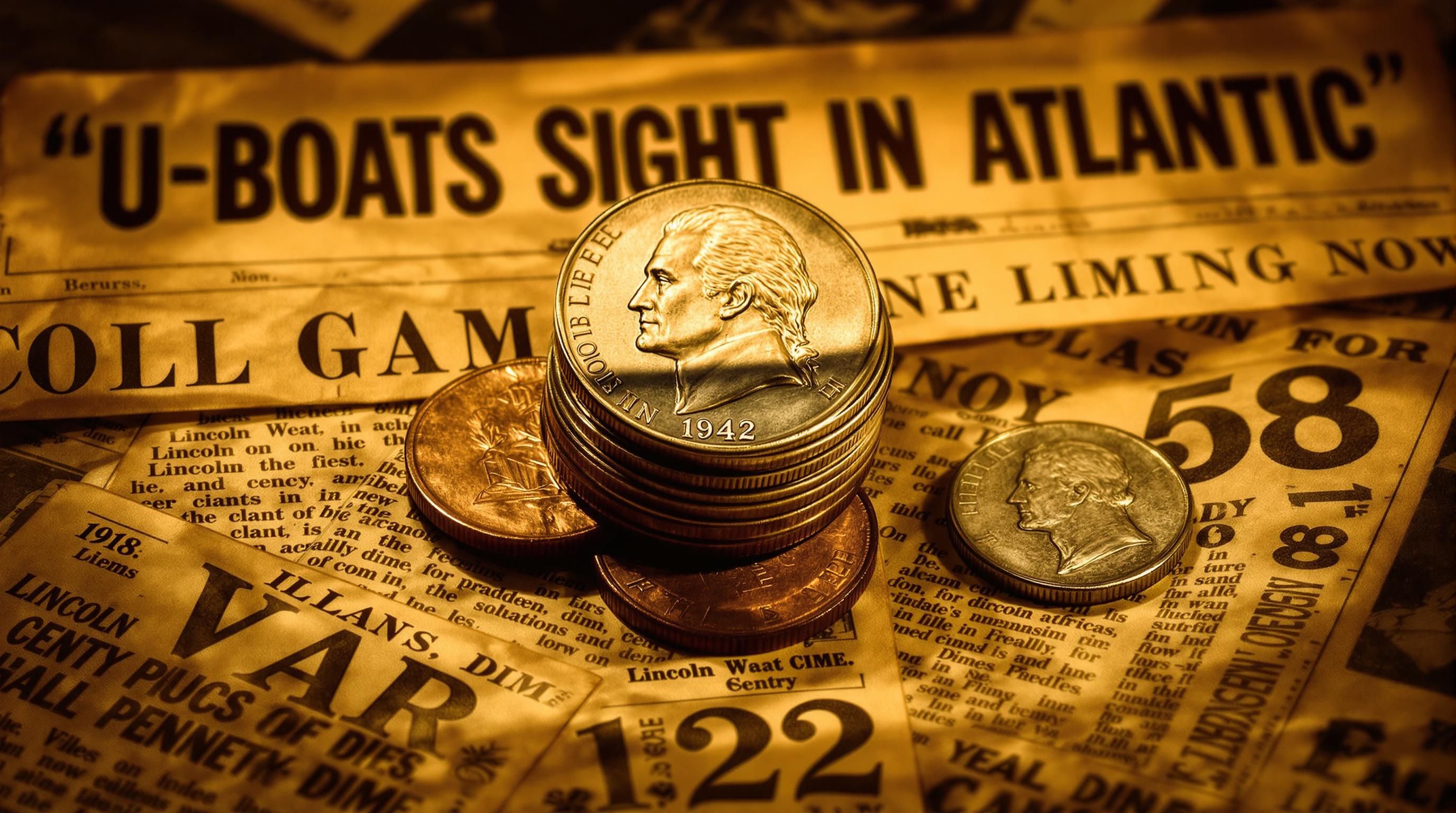
Special Features and Varieties: The Full Steps Designation
What Are Full Steps?
The Monticello building depicted on the reverse of Jefferson nickels has a series of steps leading to the entrance. Due to design limitations and striking pressure, these steps often appear incomplete or partially merged, especially on circulated coins. The Full Steps designation comes in two varieties:
- 5 Full Steps (5FS): Five complete, distinct steps are visible
- 6 Full Steps (6FS): All six steps are fully delineated
A 1942 nickel with Full Steps can command significant premiums above regular examples, often 2-3 times the base value or more. According to the PCGS CoinFacts, Full Steps examples are particularly scarce for 1942 nickels and can be quite valuable in higher mint state grades.
Notable Errors and Varieties in 1942 Nickels
Double Die Errors
Double die errors occur when the die used to strike the coin received multiple impressions at slightly different angles during its creation. On 1942 nickels, these can appear as:
- Doubled date
- Doubled mint mark
- Doubled inscriptions
- Doubled features on Jefferson’s portrait
Double die errors on 1942 nickels can increase the value by 50-300% depending on the prominence of the doubling and the overall condition of the coin.
Off-Center Strikes
Off-center strikes happen when the coin blank isn’t properly centered during striking. The value depends on how far off-center the strike is and whether the date and mint mark are still visible:
- 5-10% off-center: $10-$25
- 20-50% off-center with visible date: $50-$150
- 50%+ off-center with visible date: $150-$300+
Wrong Planchet Errors
One of the most valuable errors for 1942 nickels would be a “wrong planchet” error, where a nickel was struck on a planchet intended for another denomination. These are extremely rare for 1942 and can fetch $1,000 or more.
Die Cracks and Cuds
Die cracks appear as raised lines on the coin, while cuds are larger raised areas at the edge where a piece of the die has broken away. Values typically range from $5-$50 depending on size and location.
According to Gainesville Coins, some of these error varieties can be quite valuable to collectors who specialize in Jefferson nickels or error coins.
How to Determine the Condition of Your 1942 Nickel
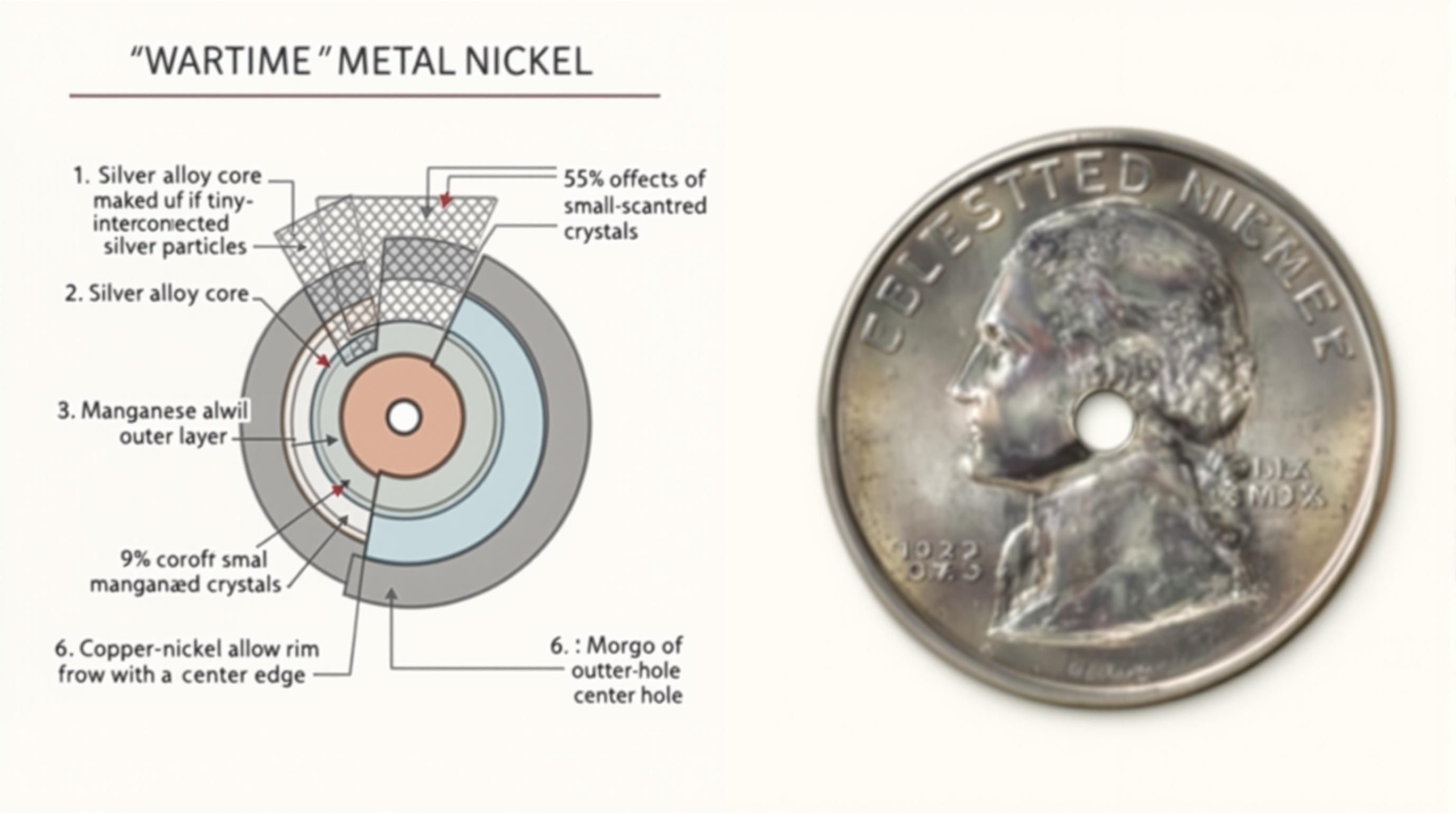
Grading Guide for 1942 Nickels
1942 Nickel Grading Checklist
Use these criteria to estimate your coin's grade:
- Good (G-4): Heavily worn with major details visible but flattened
- Very Good (VG-8): Moderate to heavy wear, all major features clear but flat
- Fine (F-12): Moderate wear, all major details clear with some minor details visible
- Very Fine (VF-20): Light to moderate wear, most details clear including hair lines
- Extremely Fine (EF-40): Light wear only on highest points, sharp details throughout
- About Uncirculated (AU-50): Very slight wear on highest points, 95%+ mint luster remains
- Mint State (MS-60+): No wear, though may have contact marks, spots, or toning
For accurate grading, pay special attention to these areas:
- Jefferson’s hair: Should show detailed strands in higher grades
- Jefferson’s cheek and jaw: Often the first areas to show wear
- Steps on Monticello: Critical for determining Full Steps designation
- Rim: Should be sharp and well-defined in higher grades
Professional grading from services like PCGS or NGC is recommended for potentially valuable coins, especially those in uncirculated condition or with special attributes like Full Steps.
Silver Content in 1942 War Nickels
Silver Value Calculation
Each war nickel contains approximately 0.05626 troy ounces of pure silver. To calculate the silver value:
- Check the current spot price of silver (per troy ounce)
- Multiply by 0.05626 ounces
For example, with silver at $33.50 per ounce (April 2025 price): $33.50 × 0.05626 = $1.88 in silver content
This means that regardless of condition, any 1942 war nickel (with the large P, D, or S mint mark above Monticello) has an intrinsic metal value of about $1.88 just for its silver content.
According to Coinflation, this melt value fluctuates with the silver market but provides a solid baseline value for these coins.
Selling and Buying 1942 Nickels
Selling Options
Coin Dealers: Local coin shops will typically offer below retail value but provide immediate payment. This is ideal for common 1942 nickels in average condition.
Online Marketplaces: Platforms like eBay allow you to reach more collectors and potentially get higher prices, though fees and shipping must be considered.
Coin Shows: These events attract serious collectors who may pay premium prices for high-grade or error 1942 nickels.
Auction Houses: For very valuable specimens (high-grade proof coins or major errors), professional auction houses like Heritage Auctions or Stack’s Bowers may be appropriate.
Buying Advice
Authentication: For expensive purchases (over $100), consider only coins graded by PCGS or NGC to avoid counterfeits.
Research Current Values: Check recent auction results on platforms like PCGS CoinFacts to ensure you’re paying a fair price.
Examine Photos Carefully: When buying online, look for clear, high-resolution photos that show both sides of the coin in good lighting.
Focus on Quality: It’s often better to buy one high-quality 1942 nickel than several in poor condition.
Verify Silver War Nickels: Always confirm the presence of the large mint mark above Monticello for war nickels.
Building a Collection of 1942 Nickels
Collection Strategies
- Complete 1942 Set: Acquire all seven major varieties (regular and war nickels from all three mints, plus proof)
- War Nickel Collection: Focus on the three 1942 war nickels as part of a complete 1942-1945 war nickel collection
- High-Grade Collection: Seek the finest examples you can afford, prioritizing coins with strong strikes and aesthetic appeal
- Error and Variety Collection: Hunt for doubled dies, off-center strikes, and other errors
- Full Steps Collection: Focus specifically on examples with fully defined steps on Monticello
Storage and Preservation
Proper storage is crucial for maintaining the condition and value of your 1942 nickels:
Coin Preservation Checklist
Follow these guidelines to protect your 1942 nickels:
- Use inert coin holders (not PVC plastic, which can damage coins)
- Store in a cool, dry environment away from humidity
- Never clean your coins - this reduces collector value
- Handle only by edges, ideally wearing cotton gloves
- Consider professional storage for valuable specimens
Frequently Asked Questions About 1942 Nickels
What 1942 nickel is valuable?
The most valuable 1942 nickels are:
- Proof nickels in pristine condition (PR-67 or higher) - worth $400 to $5,750
- Regular issue nickels with Full Steps designation in MS-65 or better - worth $100 to $300+
- Major error coins like significant off-center strikes or wrong planchet errors - worth $100 to $1,000+
- Silver war nickels in gem uncirculated condition - worth $20 to $135
Even common 1942 silver war nickels have about $1.88 in silver content regardless of condition.
How much is a 1942 nickel worth with no mint mark?
A 1942 nickel with no mint mark (from Philadelphia) in typical circulated condition is worth about $0.25 to $1.50 depending on wear. In uncirculated condition, values range from $10 (MS-63) to $35 (MS-65), while superb gems (MS-67) can reach $175 or more. Full Steps examples command significant premiums above these values.
Note that a 1942 nickel with no mint mark is the standard copper-nickel composition, not the silver war nickel variety.
Are all 1942 D nickels silver?
No, not all 1942-D nickels are silver. The Denver mint produced both regular copper-nickel and silver war nickels in 1942. To identify which type you have:
- If the "D" mint mark appears to the right of Monticello on the reverse, it’s a regular copper-nickel composition.
- If the "D" mint mark appears ABOVE Monticello and is notably larger, it’s a silver war nickel containing 35% silver.
1942 was the only year when both regular and silver compositions were produced at the Denver mint.
How much is a 1942 to 1945 silver nickel worth today?
The value of 1942-1945 silver war nickels typically starts at their silver melt value, which is approximately $1.88 as of April 2025 (with silver at $33.50 per ounce). However, collector value often exceeds this base price:
- Circulated war nickels: $1.75 to $3.25
- Uncirculated examples (MS-63): $8 to $18
- Gem uncirculated (MS-65): $20 to $40
- Superb gems (MS-67): $100 to $150+
The 1942-P, 1942-D, and 1942-S war nickels generally have similar values, with the San Francisco issues sometimes commanding slightly higher prices in top grades. War nickels with Full Steps designation can be worth significantly more.
Where is the mint mark on a 1942 nickel?
The location of the mint mark on a 1942 nickel helps identify whether it's a regular nickel or a silver war nickel:
Regular 1942 nickels: The mint mark (D or S) appears on the reverse to the right of Monticello. Philadelphia-minted regular nickels have no mint mark.
1942 silver war nickels: The mint mark (P, D, or S) appears on the reverse ABOVE Monticello’s dome. This large mint mark is distinctive and easy to spot. This was also historically significant as it marked the first time the Philadelphia mint used a "P" mint mark on any U.S. coin.
If you’re having trouble locating the mint mark, use a magnifying glass and look carefully at both positions on the reverse of the coin.
Conclusion: Is Your 1942 Nickel Worth Keeping?
Key Takeaways
- Check for silver content: 1942 war nickels (with large mint mark above Monticello) contain 35% silver and are always worth more than face value
- Examine condition carefully: Even small differences in preservation can significantly impact value
- Look for Full Steps: This designation can multiply the value of your coin
- Consider historical significance: As pieces of WWII history, these coins have both numismatic and historical value
- Watch for errors: Double dies, off-center strikes, and other errors can make your coin more valuable
Whether worth a few cents or several hundred dollars, 1942 nickels offer collectors an accessible entry point to an important era in U.S. coinage. Their dual composition types, historical context, and variety of mint marks make them more than just pocket change—they’re tangible pieces of American history worth preserving for future generations.
External Resources for 1942 Nickel Research
NGC Coin Explorer: 1942 Nickel
Comprehensive information and pricing data for 1942 Jefferson nickels from Numismatic Guaranty Corporation.
PCGS CoinFacts: 1942 Nickel
Historical data, auction records, and variety information from Professional Coin Grading Service.
Coinflation: 1942-1945 War Nickel Silver Value Calculator
Calculate the current silver melt value of 1942 war nickels based on live silver prices.
JM Bullion: 1942 Jefferson Nickel Value Guide
Detailed pricing and historical information for 1942 Jefferson nickels.
Coin Value Checker: 1942 Nickel Values and Errors
Comprehensive guide to 1942 nickel values including error coins and variety types.
USA Coin Book: 1942 Jefferson Nickel Value
Current market values and historical price trends for 1942 Jefferson nickels.
National World War II Museum
Historical context about metal shortages during WWII that led to the creation of silver war nickels.
Get a Professional Appraisal
Unsure about your item’s value? Our certified experts provide fast, written appraisals you can trust.
- Expert report with photos and comps
- Fast turnaround
- Fixed, upfront pricing
No obligation. Secure upload.
| Category | Price | Notes |
|---|---|---|
| PR-63 | $135 - $175 | Some minor imperfections |
| PR-65 | $200 - $250 | Minor imperfections |
| PR-67 | $400 - $550 | Nearly flawless |
| PR-68 | $1,000 - $5,750 | Virtually perfect |
